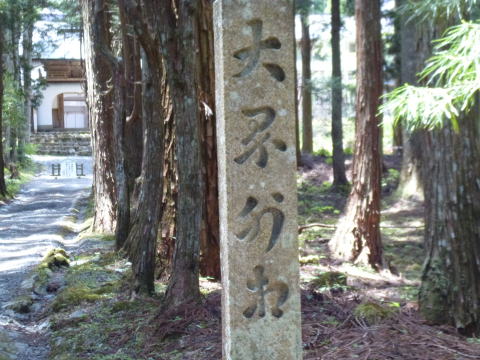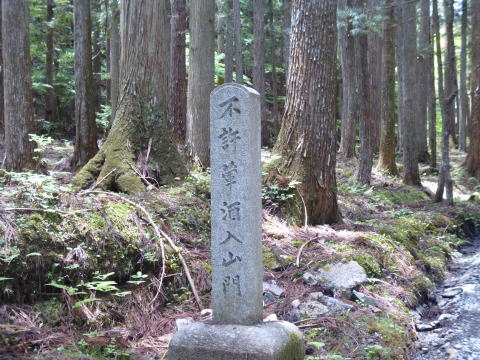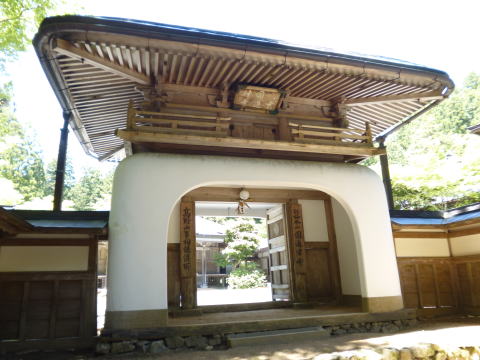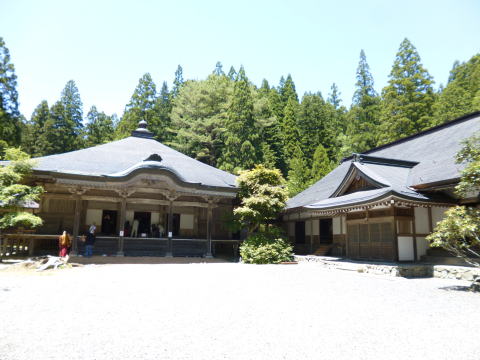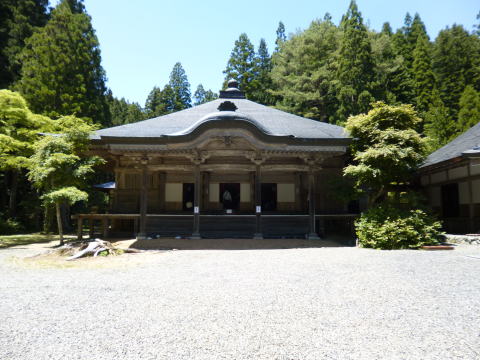Shin Bessho Entsu-Ritsumei-ji Temple![]()
Entsu-Ritsumei-ji Temple is located in a tranquil valley, one mountain
south of Renge Valley in Mount Koya, Wakayama Prefecture.
It consists of buildings such as the main hall, priest's quarters (kuri), bell tower gate, treasure house, guardian shrine, and dormitory.
It is called Reigakusan Ritsuzo-in Temple, and its principal image is Shaka Nyorai (a wooden seated statue, a nationally designated Important Cultural Property).
In the past, it was called Senjuojo-in Temple, and was also called Shin
Bessho (Shinbessho) in contrast to Odawara Bessho, which was founded by
Kyokai, Naka Bessho, which was inherited by followers of Kakuban, and Higashi
Bessho, which was founded by Myohen, among the Bessho temples of Mount
Koya.
A Bessho is a place where nembutsu saints gather.
It is said to have been founded by Chisen Daitoku, one of Kukai's ten greatest
disciples, and fell into ruin after Chisen's death, but was rebuilt by
Shunjobo Chogen, who served as the chief monk for the rebuilding of Todaiji
Temple in Nara during the Bunji era (1185-89), and used as a training center
for exclusive nembutsu.
At the time, it is said that Genku, Kumagai Renshobo, and others climbed the mountain and formed a friendly relationship with Chogen.
The temple later fell into decline when Chogen moved to Kamakura in response to an invitation from Minamoto no Yoritomo, but in 1612 during the Edo period, Yamaguchi Shuri-no-jo Nyudo Shigemasa (who shaved his head and was known as "Shinkei"), who served the second shogun Tokugawa Hidetada, tried to revive it together with Genshun, admiring Chogen's work.
It was rebuilt in 1619, and Kenshunbo Yoshinaga was invited to revive it.
Since then, it has been passed down to the present day by abbots with strict
discipline, such as Shinseibo Ennin, Eshinbo Myozui, Mitsumonbo Honsho,
and Mitsujobo Ryukai.
During the Edo period, there were six branch temples in Yamato Province,
one each in Izumi Province and Shimousa Province, two in Settsu Province,
and seven in Iyo Province (Kii Shoku Fudoki).
In modern times, the Daiedo (Renkajoin) temple served as the temple's administrative center for a long time, but in recent years it has been transferred to Kongobu-ji Temple, and the head priest of that temple also serves as the chief priest.
Currently, the Jisou Kodensho has been opened and is a training center,
so it is not open to the public.
At the entrance to the approach to the temple are barrier stones with the inscriptions "No meat or alcohol allowed inside the temple gate" and "Daikaigeso".
Once a year, on the 8th of April in the lunar calendar, the Hanamori Festival is held, during which worshippers are allowed to enter.
It houses the nationally designated Important Cultural Property "A Collection of Ten Colored Scrolls on Paper" and "White Drawings of Acala and Bishamonten with Two Children."
In April 2019, a "small wooden stupa donated to Mt. Koya" was discovered under the platform where the principal image is enshrined.
In February 2021, the National Council for Cultural Affairs recommended that the stupa and related materials be registered as tangible folk cultural properties.
Take the bus from Koyasan Station on the Nankai Koya Line, get off at Karukayado-mae,
and walk for 30 minutes.

